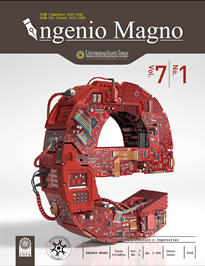Correlation between the liquid limit and compressibility coefficient of clay in the coastal plains
Main Article Content
Abstract
Downloads
Article Details
DECLARATION OF ORGINIALITY OF SUBMITTED ARTICLE
With this document, I/We certify that the article submitted for possible publication in the institutional journal INGENIO MAGNO of the Research Center Alberto Magno CIIAM of the University Santo Tomás, Tunja campus, is entirely of my(our) own writing, and is a product of my(our) direct intellectual contribution to knowledge.
All data and references to completed publications are duly identified with their respective bibliographical entries and in the citations thus highlighted. If any adjustment or correction is needed, I(we) will contact the journal authorities in advance.
Due to that stated above, I(we) declare that the entirety of the submitted material is in accordance with applicable laws regarding intellectual and industrial property, and therefore, I(we) hold myself(ourselves) responsible for any complaint related to it.
If the submitted article is published, I(we) declare that I(we) fully relinquish publishing rights of the article to the University Santo Tomás, Tunja campus. As remuneration for this relinquishment of rights, I(we) declare my(our) agreement to receive two (2) copies of the edition of the journal in which my(our) article appears.
References
Concesión Costera Cartagena Barranquilla (2015). Geología para ingeniería (vol. III). Barranquilla: Autor.
Das, B. M. (2001). Fundamentos de ingeniería geotécnica. Ciudad de México: Thomson
Díaz, C., Castro, I. y Manjarrez, G. (2010). Mangles de Cartagena de Indias: Patrimonio biológico y fuente de biodiversidad. Colombia: Fundación Universitaria Tecnológico Comfenalco.
Holtz, R. y Kovacs, W. (1981). An introduction to la realización de ensayos de laboratorio suficientes Geotechnical Engineering. Nueva Jersey: Prentice Hall.
Ingeominas (2003). Plancha 023, Cartagena.
Molina, G., Hernández, E. y Castillo C. (2012).
Determinación de la correlación entre el coeficiente de compresión y propiedades índice en suelos de expansión urbana de Pereira. Avances, Investigación en Ingeniería, 9, 72-79.
Montaña, D. (2013). Características de compresibilidad y resistencia de arcillas típicas del depósito lacustre de Bogotá (tesis de maestría). Bogotá: Escuela Colombiana de Ingeniería Julio Garavito.
Nakase, T. y Boekhout, T. (1988). Emendation of the genus Bensingtonia Ingold. Journal of General and Applied Microbiology Tokyo, 34(5), 433-437.
Skempton, A. W. (1986). Standard penetration test procedures and the effects in sands of overburden pressure, relative density, particle size, aging and overconsolidation. Geotechnique, 36(3), 425-447.
Terzaghi, K. y Peck, R. B. (1967) Soil mechanics in engineering practice (2.a ed.). Nueva York: John Wiley & Sons.

